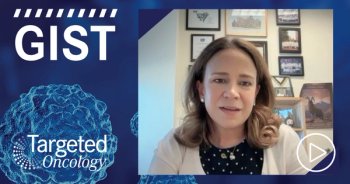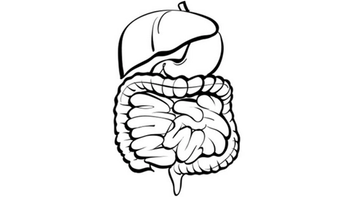
Progressing Gastrointestinal Stromal Tumor
Neeta Somaiah, MD: Patients with GIST [gastrointestinal stromal tumor] who progress beyond frontline therapy on imatinib and move on to second-line therapies, invariably require third-line, fourth-line therapy, and beyond because their time on the TKIs [tyrosine kinase inhibitors] after imatinib tend to be more short-lived. This points to the type of resistance that they have developed in their tumors and might point to whether they get benefits on their second, third, or fourth-line therapies.
When they come to see me, a third-line approved agent is regorafenib, and most patients with an exon 17 secondary mutation, and even some patients with wild-type GIST, do quite well on regorafenib. They do invariably progress, and prior to recently, we didn’t have an approved fourth-line agent, and we used to treat them with other available TKIs that you could prescribe, such as pazopanib, nilotinib, and ponatinib. These are tough to get approvals for insurance, but there are published data of response, and on occasion, patients would respond to these TKIs.
The standard thing to do as well, if you don’t have an approved agent, is to put the patient back on the TKI they have previously responded to well because the progression tends to be slower when they’re on the TKI than when they’re off the therapy.
Transcript edited for clarity.
Case:
A 68-Year-Old Man With Gastrointestinal Stromal Tumor
Initial presentation
- A 68-year-old man complains of a 4-month history of decreased appetite, vague abdominal discomfort and a sensation of fullness
- PMH: DM, medically controlled; colonoscopy at age 50 was unremarkable; no family history of cancer
- PE: abdominal pain on deep palpation; otherwise unremarkable
Clinical workup
- Labs: Hb 10.5 g/dL, plt 105 x 109/L; other lab values WNL
- Endoscopy: showeda submucosal ~6 cm mass with ulceration
- EUS: irregular borders on extraluminal surfaces with marginal halo and hyperechogenic spots
- FNA biopsy: mitotic activity showed >5 mitoses/50 HPFs
- Mutational testing: WT-GIST
- Abdominal/pelvic CT confirmed a 6.2 cm lesion with indistinct margins in the body of the stomach
- MRI showed 3 small hepatic lesions consistent with metastases
- Stage IV; ECOG 0
Treatment
- He was started on imatinib 400 mg PO qDay, continued for 24 months until he complained of increased abdominal pain and an additional 8-lb weight loss
- ECOG 1; Imatinib was discontinued
- Treatment initiated with sunitinib 50 mg PO qDay for 4 weeks, with a 2-week drug-free interval
- Treatment was well tolerated for 3 cycles when he developed nausea and vomiting; dose reduced to 25 mg PO qDay without resolution of AEs; sunitinib was discontinued
- Regorafenib 160 mg (four 40 mg tablets) PO qDay for the first 21 days of each 28-day cycle was started, poorly tolerated
- Repeat lab work showed: Hb 8.9, AST 65 IU/I; regorafenib was discontinued
- The patient was started on ripretinib 150 mg PO qDay









































